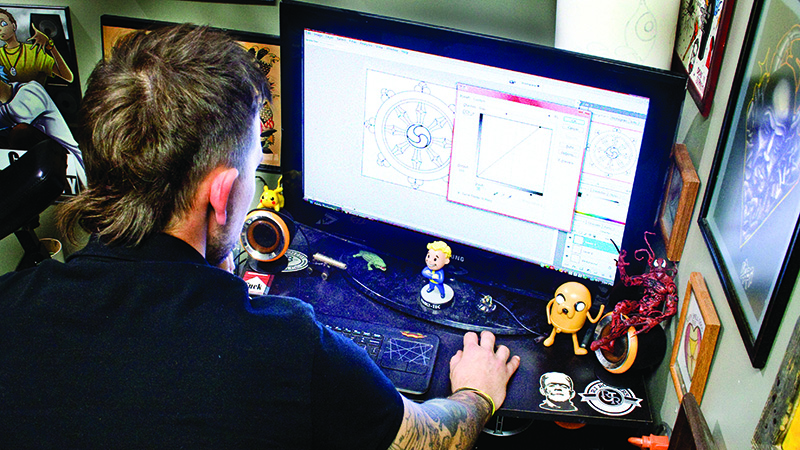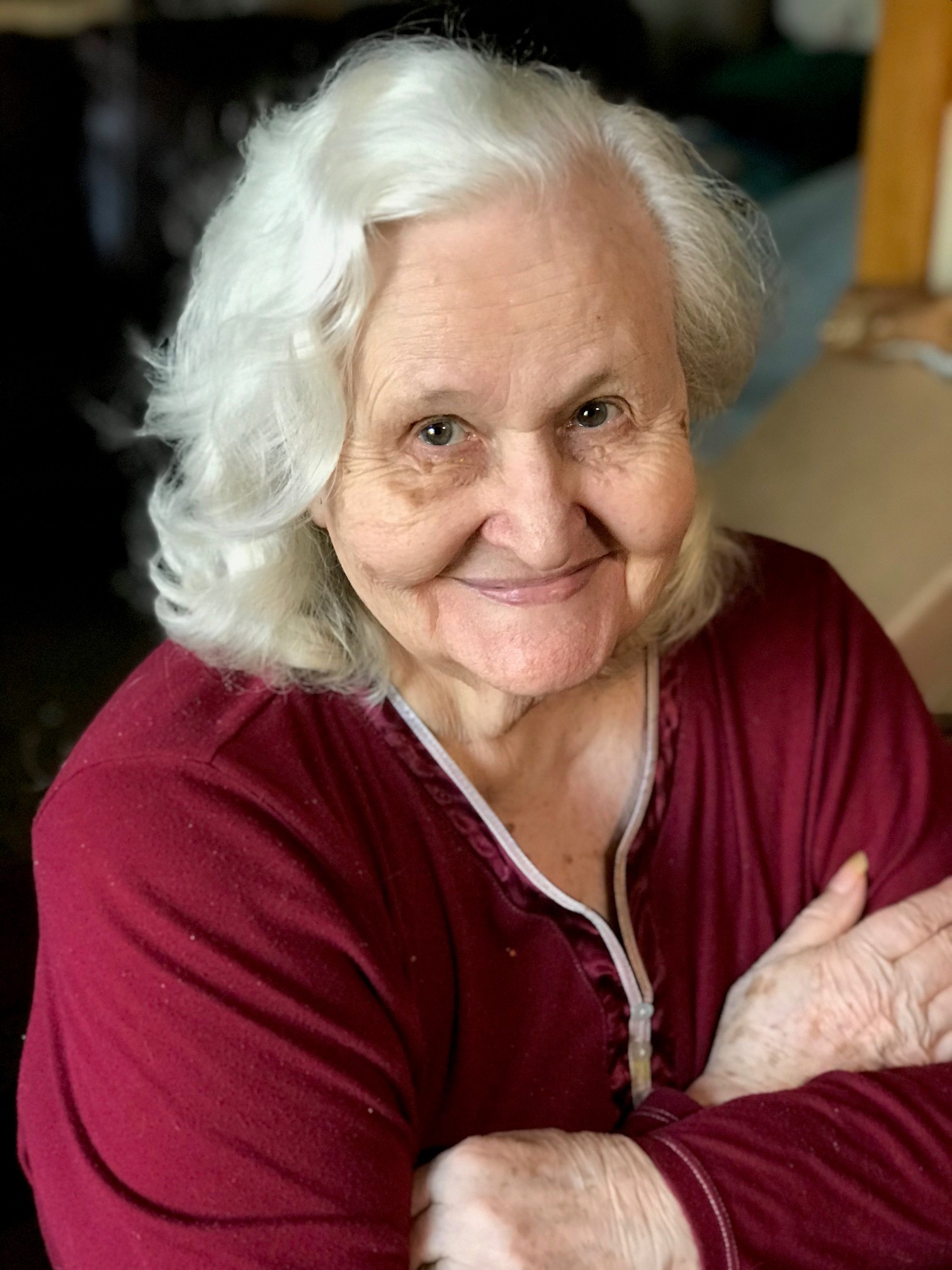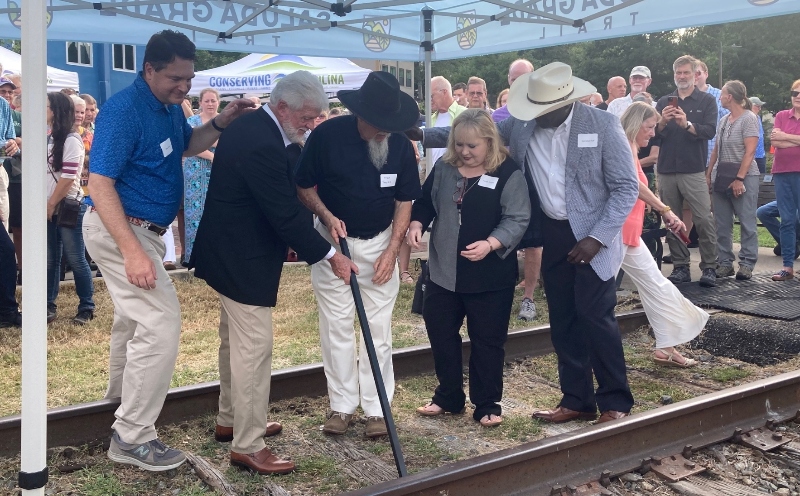The Art of Tattoo, Carrying the Canvas
Published 6:11 pm Friday, November 9, 2018
An ancient form takes life on the skin of Foothills residents
The snow would soon catch the bearded Scythian chieftain trotting his pony across the grassy slope.
Behind him, gray clouds already obscured peaks of the Altai Mountains. Wind flapped his rust-colored wool cloak and threatened to steal his conical hat of brown felt.
Trending
So far, his brown wool tunic and leggings held the cold at bay. He knew some tattoos on his body provided additional protection against misfortunes of weather, as well as war, and that in the next life, some would assure his acceptance by tribe members who had gone before, identifying his status, deeds and prowess.
He did not know that, in about 2,500 years, he would be known as The Man of Pazyryk. Preserved in the Siberian permafrost, his skin would be a canvas of rams, antlered deer, abstract carnivores, fish, griffins, a donkey and the monster of a personal dream, many intertwined, and each rendered with stunning intricacy.
Archaeologists would learn more of the ancient nomadic culture from him and try to understand what was so important or beautiful in his life that he would carry the images of it into death. Even now, much is hypothetical or unknown as to why the Scythian was tattooed, how it was done and who did it.
I was almost ready to leave it at that, but then remembered the tattoos on the arms of my horse’s farrier.
The canvas
Trending
Jeff Pauley is one of only a few farriers in the United States to have achieved the distinction of an associate of the Worshipful Company of Farriers from the United Kingdom. A former mechanical engineer, he is meticulous, and has trained farriers in Colombia, South America, and worked at Endurance World Championships internationally.
“I collect art,” Jeff says. “While some people hang their collections on the wall, I carry the canvas. I want art to express my thoughts and what I think is beauty. My first tattoo, above the bicep in 1986, a spiky tribal symbol, was a mistake. Rather than remove it, I added a pair of roses to soften the geometry. That was it for almost 30 years, until it became the starting point for my sleeve.”
A sleeve is a large single tattoo or integrated smaller tattoos that flow from shoulder to wrist. Jeff’s sleeve took nine sittings of two to four hours each.
“I got my first tattoo as a statement of freedom from my ex-husband who had forbidden me to get a tattoo,” says Kimberly Borr, a hair stylist and Jeff’s significant other. “I got the horse pair on the small of my back to show my love for endurance riding.”
Wanting to learn more, I talked with Nathan Winegar, a construction worker. His right sleeve is a New Testament montage.
“When people ask me about it, I have the chance to share The Word,” he says.
Courtney Montgomery, a vet tech, has a sleeve and tattoos on her back because she likes the color and the appearance.
“They’re fun,” she says.
Elizabeth Ngee, a former police officer pursuing a career in physical therapy, says the oriental imagery of her tattoos have personal meanings of her Chinese heritage.
Tattooing the skin
The top layer of skin is the epidermis, with five strata. The second layer, the dermis, contains the sweat and sebaceous glands, blood vessels, follicles and sensory receptors.
In tattooing, a needle or other sharp object, coated with pigment, pierces the epidermis and deposits the color in the top third of the dermis. The epidermis flakes off over time, continuously replacing itself as protection for the dermis. Sun will fade the tattoo, but otherwise, the pigment in the dermis is permanent.
A Scythian artist may have used a sharpened bone or a pointed incandescent sliver of wood, one painful puncture at a time to a depth determined by touch.
Today, needles are sterile, either a pre-sterilized disposable or stainless steel that can be autoclaved. A motor drive, traceable to an invention by Thomas Edison, moves the needle(s) in and out of the skin, 80 to 150 times per second, at a more precise and consistent depth. Needle diameters are .30, .35, and .40 mm, and, depending on the effect, can be used singly (.40 mm for lining) or in various combinations up to 27 needles (.30 or 35 mm for shading). The artist dips the needle, like a vintage quill pen, into the ink every 10 seconds.
Jeff says the pain is about the same as a bee sting, and afterwards, skin is tender like sunburn. Courtney, the vet tech, says a cat scratch is more annoying.
The artist
A tattoo artist in South Carolina must pay for an apprenticeship before working in a studio and earn yearly continuing education credits in bloodborne pathogens and infection control to maintain a license.
Tyler Teague, tattoo artist and co-owner of 9 Lives Tattoo in Inman, with his wife Angela, remembers his father going for a tattoo and taking him along as a 9-year-old. Tyler loved the art and knew someday he’d have one like dad. He paid for an apprenticeship by bartending.
“I see skin as potential, then draw on paper, apply color theory, and envision the final art before my stencil touches skin,” Tyler says.
A stencil, like carbonless paper, transfers the image so he can see the temporary image in place and in motion before tattooing over it.
Chad Glover, a tattoo artist at 9 Lives, worked in construction to pay for his apprenticeship.
“I did art projects with my grandparents and could always draw with depth,” Chad says. “I could simply do it, and pushed myself to improve a seamless style.”
Devin Kimbrell, the third artist at 9 Lives, was studying botany at college when his grandmother advised to be sure that’s what he really wanted.
“I took my paintings and sketches to the apprenticeship interview and paid my way working in a greenhouse,” Devin says. “I still like to paint…but, with tattooing, I can be an artist without the starving part of it.”
Since the 1970s, tattoos have become increasingly mainstream.
The industry has grown 13 percent from 2011 to 2016. A 2016 Harris poll reports 29 percent of Americans, and nearly 50 percent between 18 and 40, have tattoos.
Professor Anne Villiquette with the University of Arkansas hypothesizes, “Living in a world that’s so fragmented and so chaotic, [tattoos] create identities very easily.” •
A photo waits in all things, all places, and everyone with a passion has a story to be told. That’s the perspective Vince Verrecchio, lightly retired ad agency creative director, brings as a writer and photographer contributing to Foothills Magazine. He can be reached at vincent.verrecchio@gmail.com.









